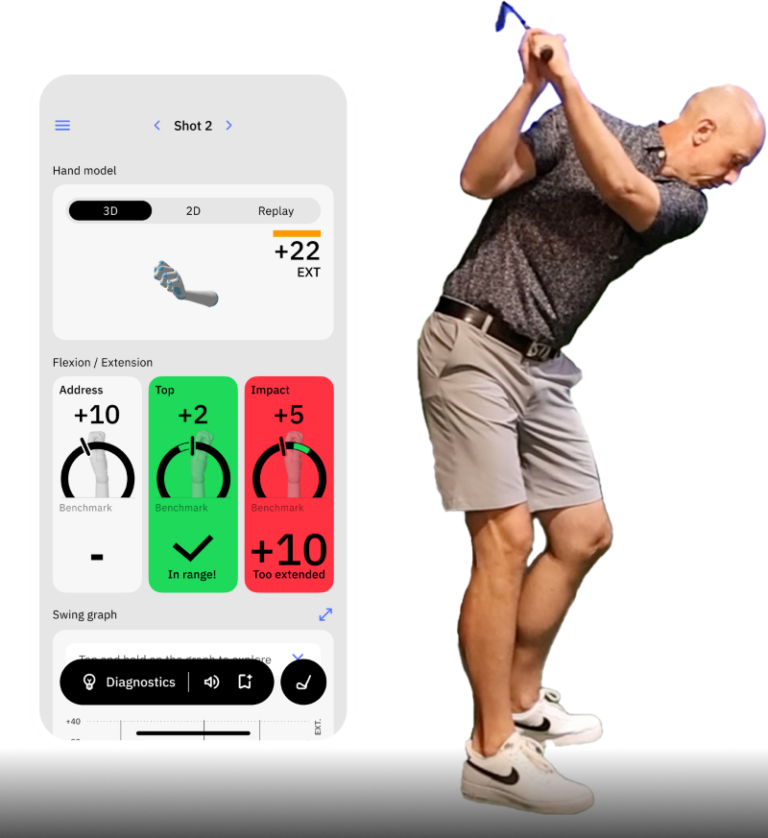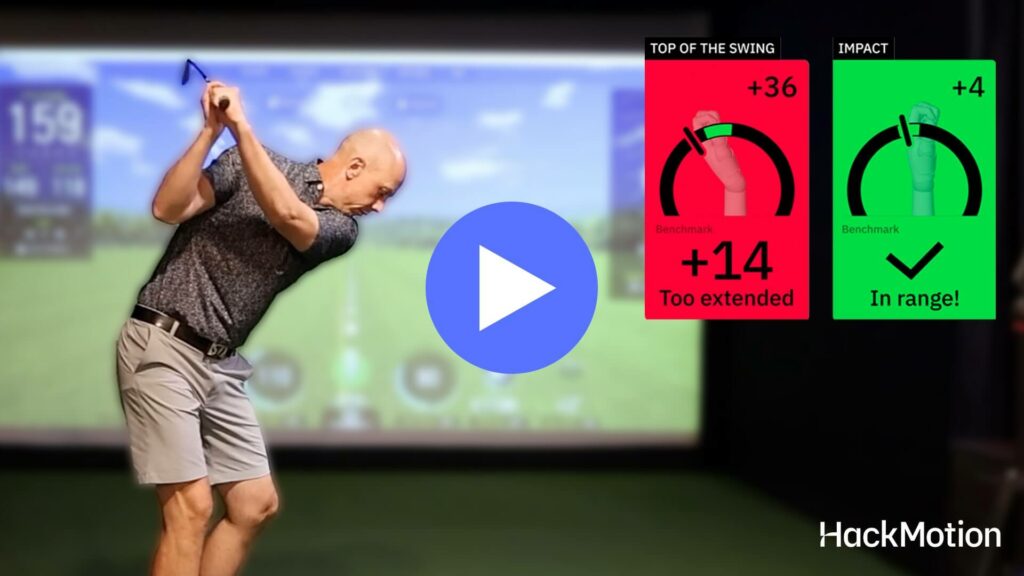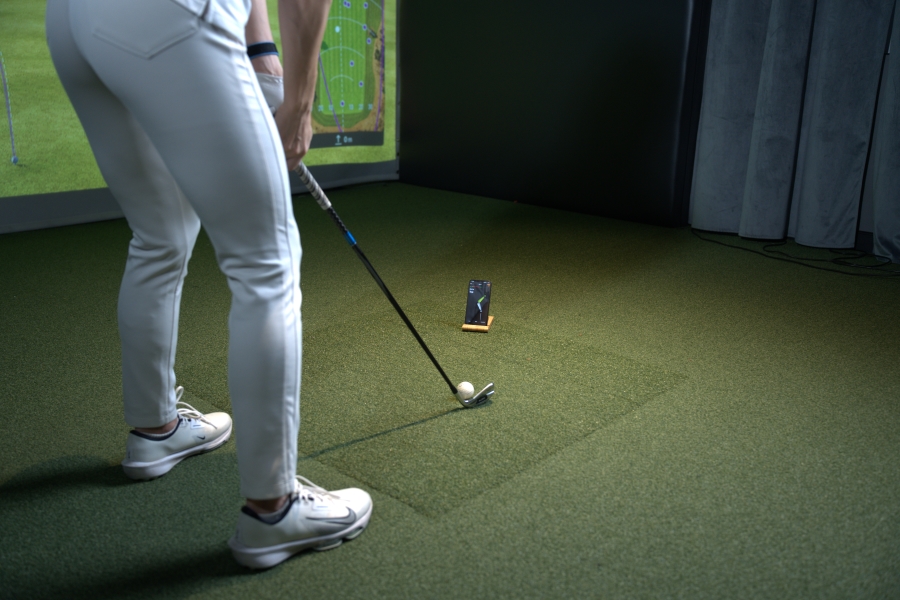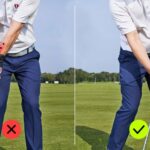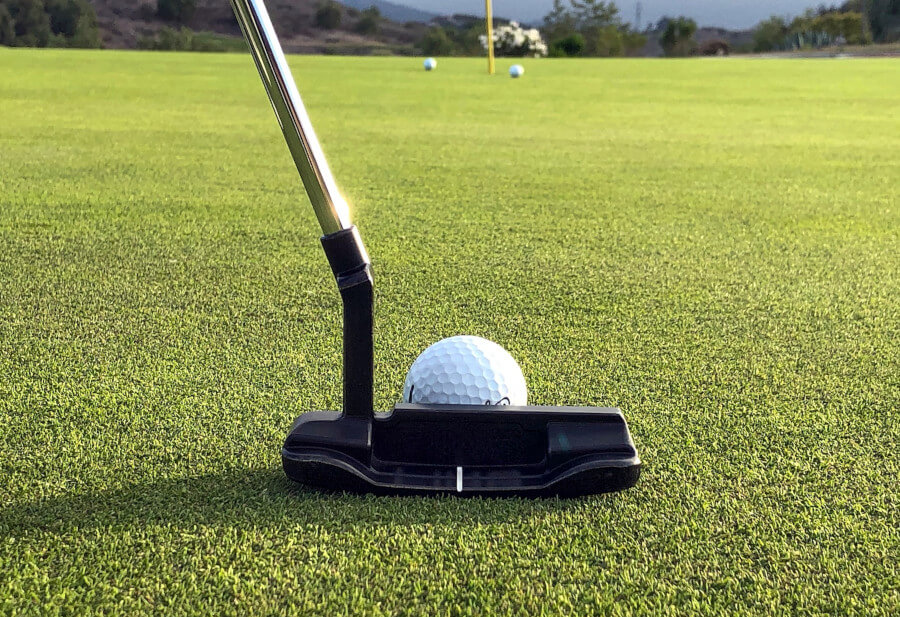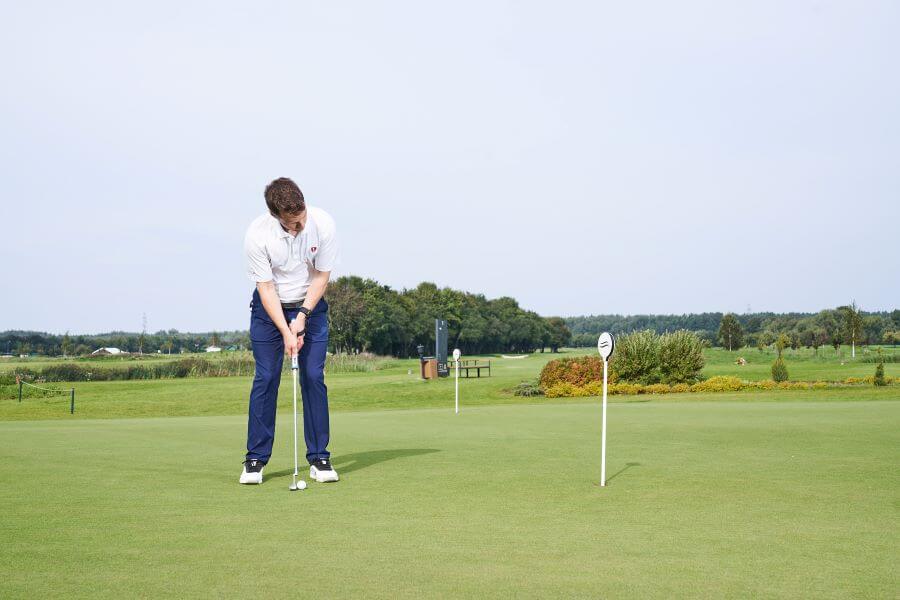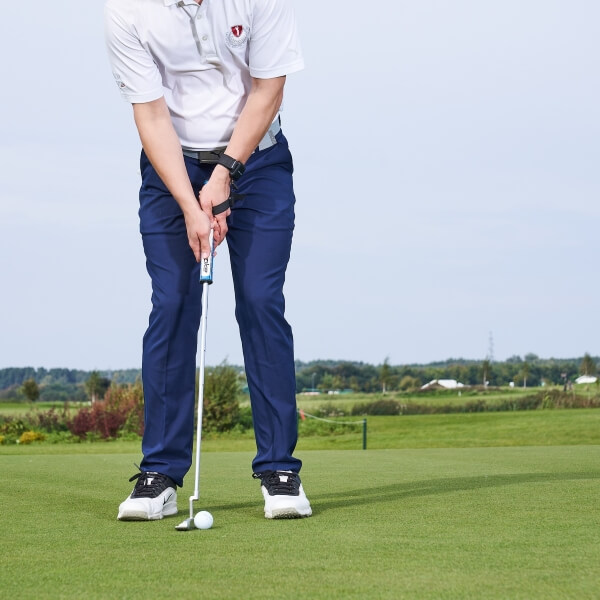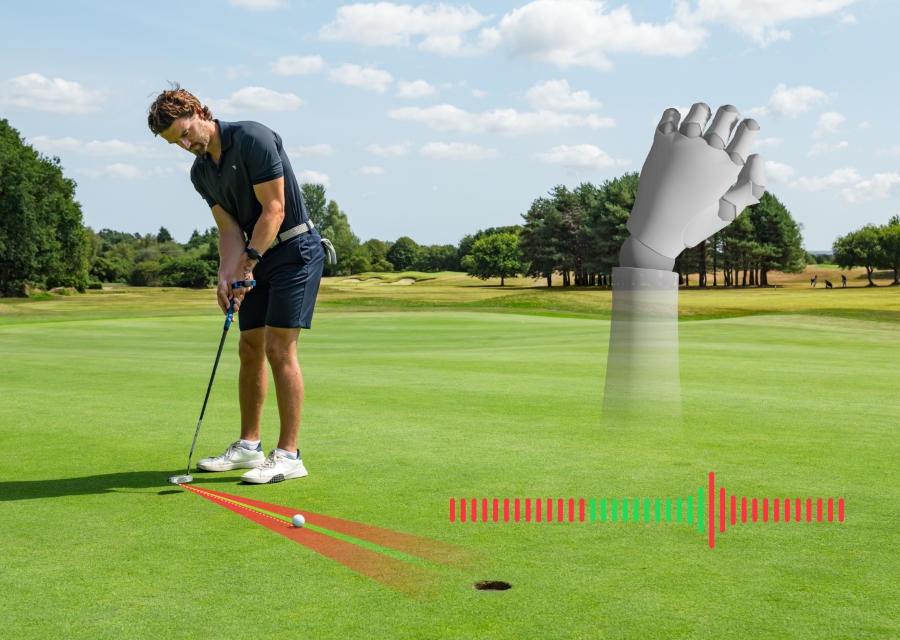How to Lag Putt Like a Pro: 3 Tips for Better Control
Ever stand over a 40-footer wondering whether you’ll leave it six feet short or race it past the hole? Good lag putters don’t guess.
There is an art to lag putting, and if you can learn it, you can help yourself suffer from fewer three-putts. Great lag putters have speed awareness, consistent launch, and wrist stability.
Follow the steps and drills below and start leaving yourself tap in’s for your second putt.
Key Takeaways
If you don’t have time to work through these tips and drills on lag putting right now, here are some of the important things you can take with you.
- Build a repeatable launch: A stable wrist position delivers consistent launch and a smooth roll.
- Match stroke length to distance: Use a calibrated cadence, same tempo, and a longer arc to dial up or down the speed.
- Quiet the wrists, power the shoulders: Minimal lead-wrist change (±5° flexion/extension) keeps the loft steady and the ball hugging the ground.
- HackMotion advantage: Real-time wrist graphs show if you’re adding loft (flicking) or delofting on longer putts.
- Lag putting is scoring insurance: Eliminate three-putts, and the strokes saved add up faster than they would off the tee or from the fairway.
Contents
Set Up for Predictable Launch
When golfers think about putting, they don’t often consider the launch. However, just like any other golf club in your bag when you hit a putt, there is still a “launch” that occurs.
The goal when hitting lag putts is to set yourself up for a consistent and predictable launch. You’ll be able to control speed and distance when you can create some predictability.

Here’s the way to set up for a predictable launch on your lag putts:
- Ball position: Slightly forward of center encourages an upward strike that starts the ball rolling, rather than hopping.
- Eye line: Over or just inside the ball, so the stroke stays on plane.
- Pressure: 55 % lead foot to discourage rising up in the downswing.
- Grip pressure: Medium-light for smooth acceleration, but firm enough that the putterhead doesn’t wobble.
- HackMotion check: Use HackMotion to monitor consistent wrist angles through impact.
Match Stroke Length to Distance
The thought for your stroke length when working on lag putting is to match the stroke length to distance.
Think about a pendulum tempo, a beat that never changes. However, for longer putts, the length of the swing will change.

- Cadence: Count “1-2” back and “1” through for every putt. It’s a little different than the 3-1 count that you would do in your full golf swing.
- Reference points: Use the trail-foot instep for 20 ft, the ankle for 30 ft, the calf for 40 ft, etc. Develop your own so that you have some type of scale you can use.
- Green-speed adjustment: For faster greens, shorten the stroke, don’t slow it down.
Stabilize the Wrists
The longer the putter, the harder it is not to “help” the shot by flicking your wrists. If you can improve your wrist mechanics, it will help with your distance control and consistency.
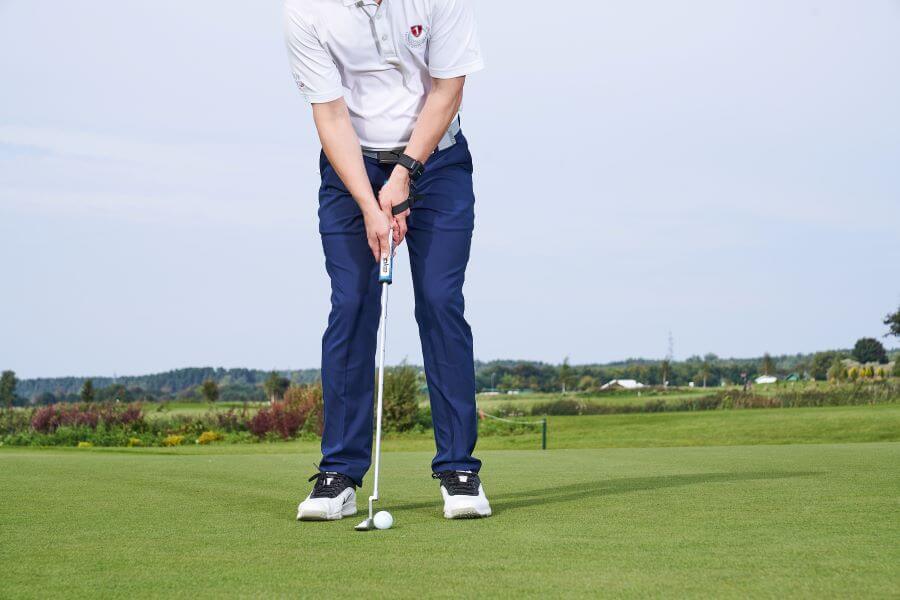
- HackMotion goal: Keep lead-wrist flexion/extension change to < 5 ° from address to impact on putts up to 40 ft. Test yourself with the HackMotion app, working on your putting stability.
- Feel: Let the shoulders rock; wrists ride along.
- Grip-pressure rule of thumb: Tighten just enough that you could pull the putter out with a gentle tug, but no tighter.
Drills to Get Better at Lag Putting
The great thing about working on your putting is that you can use specific drills that help speed up learning and make the process more manageable.
Here we will look at three simple drills you can use to work on your lag putting and become a better player.
Train smarter at home—putting, short game, and full swing. Start with these putting drills to practice at home, then expand your routine with our full guide on how to practice golf at home.
Ladder (Build-a-Staircase) Drill
Here’s a classic lag putting drill called the Ladder or staircase drill.
When you master this with your lag putting, learn how to do the same thing with your chips. You’ll be a short game expert in no time.
- Video timestamp – 0:15 – 4:30
Ladder Drill – Step by Step:
- Set the Zone: Place two tees or alignment sticks on the green, spaced three paces apart.
- Start the Drill: Putt your first ball so it stops just inside the starting edge of the zone.
- Progress: Each new putt must stop further than the last, but still within the zone.
- Reset If Missed: If any ball finishes short of the previous or beyond the zone, restart from the beginning.
- Goal: Land six balls in sequence for solid control. Tour-level goal? Make it to ten in a row.
Heads-Up Tempo Drill
If you are a player who struggles with feel on the greens, then the Heads Up Tempo Drill could be a good fit.
This is an entirely different way to putt, but you’ll be training your brain on what proper feel should be.
- Video timestamp – 5:48 – 8:23
Heads-Up Tempo Drill – Step by Step:
- Feel the Speed: Take rehearsal strokes while looking at the hole. Focus on sensing the energy needed to reach the cup.
- Roll It: Step up to the ball and putt while keeping your gaze on the target.
- Mix It Up: Alternate between heads-up strokes and traditional (looking at the ball) to blend feel with routine.
- Bonus: Some players use this method during actual rounds. You don’t have to—but try it and see if it works for you.
Chopsticks Drill
The Chopsticks Drill is a great way to use your alignment sticks to stabilize your putting stroke.
You’ll need a rubber band for this one, and wearing the HackMotion can help you keep an eye on your flexion and extension throughout the stroke.
- Video timestamp – 2:59 – 5:20
Chopsticks Drill – Step by Step:
- Set Up: Rubber-band two alignment sticks together and tuck them under your biceps like chopsticks.
- Cradle the Putter: Slide the putter shaft between the sticks so it rests in the cradle you’ve created.
- Stroke It: Make putting strokes. If the shaft jumps or pops out, your wrists or arms are moving too much.
- Add Feedback: Wear HackMotion to monitor your wrist angles. Look for flat or consistent flexion/extension readings through the stroke.
HackMotion Flexion/Extension Drill
The HackMotion Flexion/Extension drill can be found in the HackMotion app.
This drill encourages you to make a medium length putt while keeping the wrist flexion/extension within 2 degrees throughout the entire stroke.
HackMotion Flexion/Extension Drill – Step by Step:
- Set Up: Prepare to hit a medium-length putt (10–15 feet works well).
- Stay Still: Stand quietly at address before beginning the stroke.
- Make the Putt: Roll the ball toward your target.
- Check Your Numbers: Use HackMotion to confirm you stayed within 2° of flexion/extension throughout the stroke.
- Repeat: Keep going until you can consistently stay in range for each stroke.
Final Thoughts
Great lag putters aren’t born. The golfers who have figured out lag putting spend time on training speed, launch, and wrist stability.
They get so used to these concepts and feel that they can start to put 30, 40, and even 60-footers in the gimme range.
Use HackMotion as your coach. Until you start measuring wrist angles, you’ll have a hard time knowing how much variation there is from one putt to the next.
If you need more structured practice plans, dive into the full Golf Drills Library for step-by-step videos and HackMotion-specific guides that turn good ideas into lasting skills.
